#zoom fly sp
Explore tagged Tumblr posts
Text


Carbon Copy
Neytiri x daughetr!Reader; Jake x daughter!Reader; Sully Family x Child!Reader
Chapter 2: Demons.
Masterlist
Previous: [prologue] [chapter 1]
Summary: Despite leaving their homeland, Y/n holds onto her mother's values. However, tragedy strikes with Neteyam's death, shattering Y/n's innocence and sparking a raging fury within her, forever changing her carefree spirit

"Devil Dog, this is Eagle Eye, Over."
As Lo'ak and my father speak through their earpieces, I tuned out. Tuk and I were the only ones in the family without them. My gaze lingers on the abandoned shack, where my parents fought Spiders father.
A knot tightens in my stomach. I hate when they use code names. Hate how foreign the tawtute li'fya sounds in my ears although I've heard them speak it multiple times. Even though my father is— was one of them.
The sound of that language stirs a pain I never lived but have inherited. A pain woven into the stories ma sa'nok and the elders passed down. A pain that will never fade. That will be carried for generations. And hearing them speak it now feels like a betrayal to My People.
Snapping out of my thoughts I catch the end of their conversation.
"Me, Spider, Kiri... Y/n and Tuk."
Lo'ak hesitates before saying our names— Tuk's with even more reluctance than mine.

"Te'lanä le-Na'vi. Oeru teya si, oeru teya si." I mutter, trying to remember the lyrics as I leave Moat's tent. She taught me the songs of our ancestors— the ones they used to sing before the Hometree was destroyed. She says Eytukan loved hearing her sing it before he met Eywa.
I once heard ma sa'nok singing it too— well not exactly. I was spying. She had been reminiscing about the past, about how life was when her father was still alive and olo'eyktan. I thought maybe if I learnt the songs from her childhood, It'd make her happy. Maybe then she wouldn't always be on edge, like she was constantly waiting for someone, for something.
"Attack! Attack!" Tuk's voice breaking up random village chatter. She zooms past, flying her Toruk toy, the one that has been passed down to Tuk from Neteyam. A scientist calls after her, but she ignores them, lost in her own battle.
I slip past Tuk and into the kelku, where Spider and Kiri are. Kneeling besides Kiri, I watch as she carefully applies medicine to Spider's arm.
"I'm definitely faster when I'm blue," he says with a smirk.
Kiri laughs, and I stare at him, a small smile tugging on my lips. Spider is odd— a tawtute. Who is constantly trying to prove himself to everyone in the village, it's impressive how brave he is even with such a small body, he's even braver than Norm. Sempu tolerates him, but sa'nok despises him for what he is. My siblings and I consider him a brother.
Hearing the hunting horn blare. My heart leaps as I bolt outside, knowing my family is in the hunting party.
"They're here!" I yell sprinting toward the ikrans descending from the sky. Tuk's excited voice trails behind me, her footsteps quick.
Lo'ak and Neteyam dismount their ikrans, their heads down. Something happened. Something bad.
"Fall in." My father's commanding voice cuts through the air catching Neteyam and Lo'ak's attention.
"You're supposed to be spotters. You spot bogies, and you call them in," he says, frustration laced in his tone as he looks them over. "Get here!" he gestures for Lo'ak to step forward.
Kiri nudges ,e toward Lo'ak while she checks Neteyam for any injuries. My mother sees my expression and immediately leaves Tuk's side to assess the damage.
"Kiri, help your grandmother with the wounded, please?" Dad's voice softens when speaking to her.
"Our brothers are wounded, sempu" I say glancing at Kiri as she rolls her eyes at our fathers words.
"Please girls, you too Tuk. Go."
We begrudgingly leave, but the last thing I hear is Neteyams voice.
"Sir, I take full responsibility."
Sir.
I hate that word, it has no warmth to it, no love. It forces my brothers into soldiers in my fathers mind. It's human. It is not the way we speak. Not the way Na'vi were meant to be. The People do not speak to one another like this, and my father knows it.
Now in the healing tent as Kiri and Grandmother tend Lo'ak and Neteyam, there was a light atmosphere as our father was out the way and it was just us kids and our grandmother.
"Aww want a kiss on the boo boo?" Spider teases.
I laugh, the weight of the prior moments finally breaking. Mo'at flicks me with her tail, silently demanding the medicine I've been holding.
"I would use yalna bark," Kiri says shoving Lo'ak playfully out the way.
"Who?" I ask, handing the medicine to Mo'at.
Kiri turns to me, scowling.
"Asked," I finish with a giggle.
"And who is tsahik?" Mo'at adds with a smirk.
I giggle even more before turning back to Lo'ak, who just shook his head, a small but distant smile on his face.
"What punishment did sempu give you this time? Me and Tuk are coming with you," I sway side to side, waiting for his response.
"Ikran duty." he groans.

We rush through the jungle, my father's orders still ringing in my ears. Plants and branches blue past as we leap over roots and weave through the trees.
Tuk walks ahead, "Come on guys, it's almost eclipse—"
Suddenly an avatar lunges from the shadows, grabbing Tuk in a crushing grip.
She lets out a sharp cry, and I stumble back my knife instinctively clutched in my hand. Before I can react, another uniltìrantokx slams into me, shoving me toward where my family stands, ambushed.
"Put it down, or I'll shoot you!" A soldier snarls, his rifle aimed squarely at my head.
"Drop it! Now!" another barks.
"Y/n, yem tsal nkell," Lo'ak urges, his voice tight with fear. My fingers tremble as I grip the knife, my knife which my songcord was connected to. Before I can decide, one of the avatars wrenches it from my grasp.
The songcord snaps.
The beads scatter, vanishing into the undergrowth of the grass underneath us.
A hiss rips from my throat, but more guns rise in response. Kiri's voice breaks through the tension, screaming for me to stop. My chest heaves. I'll find a way to get it back.
But then— pain.
A searing, blinding pain.
One of them yanks my kuru, and I collapse, knees slamming into the dirt. A scream is torn from my throat, raw and guttural, the agony unlike anything I've ever felt, like fire seeping into my very soul, severing something sacred. My stomach churns, my vision blurs, my breath stutters.
"Shut the fuck up!" The soldier gripping my queue sneers, pressing my own knife against my throat. I bite down on my lip to stop another scream, tears burning hot trails down my face.
"Hey Colonel, check it out, five fingers, We got a half breed."
The one holding Kiri lifts her trembling hand.
The leader approaches, his boots sinking into the damp soil. He studies her, then moves to Lo'ak.
"Show me your fingers."
Lo'ak lifts both middle fingers. Only something he, Kiri and my dad can do.
"Yeah you're his alright." Then he turns to me. The soldier behind me finally releases my queue, but before I can breathe, my wrists are seized.
"You might not have five fingers," he muses tilting his head, "but you sure as hell look like that Sully woman."
I hiss, baring my teeth.
"And just as crazy." he adds, smirking as he walks away.
Then without warning, he grabs Lo'aks kuru and yanks.
"Where is he?" he demands, twisting the queue in his hands.
Lo'ak grits his teeth, refusing to scream.
I force myself to look away, I can't bear the see my brother in pain. I focus on anything else, the ache pulsing through my skull, the parts of my songcord which lay there, parts of my life left sprawled on the damp jungle floor something that has always been apart of me now discarded like none of it even mattered.
The soldiers drag us back to the abandoned shack, the place where it all started.
"Lyle, pull the audio from this," the Colonel orders.
"That's Sully's woman," he sneers. "She's an animal."
Night falls.
They line us up. Tuk by my side, we hold hands as long as we can. The rain falls in sheets, masking my tears, but I can still feel them.
Yip
My ears twitch.
I turn to Tuk silently, she nods.
Yip
Sa'nok.
To anyone else, it's just another sound in the jungle. To a Sully— it's a declaration of war.
The night is silent, too silent. No birds, no animals. Eywa knows.
Yip
Yip
Suddenly an arrow slices through the air, striking the avatar holding Kiri and Spider. Chaos erupts. Lo'ak pulls a pin from one of the soldiers smoke grenades
Gunfire. Screams. Smoke.
Tuk and I sink our teeth into the arms of the soldier restraining us. He howls in pain, losing his grip on us, "You little shits!"
"Tuk, come!" I grab her wrist, dragging her toward the trees. I have to get her out. I have to—
My mother's yell echoes through the chaos of the jungle.
"Demon! I will kill you as many times as I have to!"
I spin to Tuk, breathless. "Go with Spider and Kiri. I'll be back!" I don't give her time to argue as I run the opposite direction.
Straight to where my songcord beads lie scattered in the dirt.
The gunfire is deafening, but I don't care. I scramble through the mud, searching.
One, Two, Three.. Nine—
Where is it?
"Y/n, Y/n Come!" Sa'nok's voice is close, desperate.
I dig frantically, fingers shaking.
Then— she grabs my arm. The realisation hits me like a tidal wave.
It's gone.
My bead.
The one I got when we first officially considered Spider our brother, apart of the Sully’s.
Back at the home base, we huddle outside of our kelku, listening in on our parents.
"This thing.. this thing is Quaritch."
My fathers voice is quiet, but it cuts deep. The name alone makes my stomach churn. The man who almost killed us today.
"I cannot, You cannot ask this. I cannot leave my people. I cannot." My mothers voice cracks.
Lo'ak kneels beside me, placing a reassuring hand on my shoulder. I lean into him, closing my eyes, listening.
"This is our home!"
"Quaritch has Spider! That kid knows everything!"
Spider would never—
"He will lead them here!"
"Wherever we go, this family is our fortress."
Later that night, Mo'at tends to my kuru.
I sit cross-legged, trembling with my back to her as the flickering firelight casts a long shadow against the walls of the kelku. My scalp burns where the vrrtep grasped my kuru. The pain sharp, relentless, but it doesn't compare to the ache in my chest.
The kind of ache that makes your body feel too heavy for your bones. the kind that settles in your heart and refuses to leave.
Tears slide down my cheeks, warm against the cold night air. I try to stay still, try to be strong, but my breath stutters with each sob I try to swallow.
"I don't want to go, grandma," I whisper. My throat feels like it's closing up. "Please... you are tsahik, don't let us go."
Mo'at says nothing. She doesn't need to. Her silence isn't cruel, it's knowing. Her hands steady as they've always been, worn from time and wisdom. She dips the cloth into the warm water and presses it gently against my scalp. The sting makes me wince, but I don't pull away. Her touch is grounding.
Her hands, so strong, now move slowly, as if trying to mend more than just more wounds. She hums quietly, soft and low, the song she taught me earlier. A plea to the ancestors.
I close my eyes.
That same song... I imagined singing it one day as tsahik of the Omatikaya, standing proud beside the Tree of Souls. I imagined teaching it to those younger than me. I imagined growing old here, under the glow of Eywa's light.
"It's not fair." I say, louder this time, the words jagged and wet. "We belong here. I belong here."
Mo'at pauses.
Then she rests her hands on my shoulder, warm solid. I lean into her touch like I did as a child. " Ma Y/n," she finally says, her voice soft but unwavering, "we do not choose the road. Sometimes the road chooses us."
I shake my head, tears falling freely now. "Why us? Why our family? Why do we have to leave."
She cups my cheek, turning me gently to face her. her eyes sine in the firelight, tears but also strength. The kind of strength I don't think I can gain.
"Because Eywa walks with you," she says. "Even when you do not feel her. Even when the path is heavy, long and full of sorrow. You carry the soul of the People with you, wherever you go."
I want to believe her. I want so badly to believe that leaving doesn't mean losing everything. But my hands are still empty. My songcord although fixed is missing something. My home is behind me.
And all I can feel is pain.
I bury my face in her shoulder and let myself cry. Not like an overprotective sister. Not like the daughter of Toruk Makto. Not like someone who is brave.
Like a child.
Just a child.
Who wants to stay.
Who wants to be whole again.
Who wants to be seen.
Mo'at wraps her arms around me, and I know, I am seen. I am loved. I am not alone.
But it hurts.
It still hurts so much.
This is like stones in my heart. Tarsem is wise beyond his years. He will be a strong olo'eyktan. The leader must die. So the leader can be born. Toruk Makto must disappear.
The next morning we walk.
The forest is quiet. no birdsong, No rustling, Just the sound of our footsteps through the soil and the distant cries of the ikrans circling. It's as if the whole of Eywa is holding her breath.
I walk behind Kiri, my fingers barely brushing hers, craving comfort but unable to reach for it. Tuk clutches my mothers hand tightly. She doesn't speak. None of us do.
I glance over my shoulder. the village. The People. Mo'at and Tarsem stand infront of the Tree of Souls. the glow of Eywa's presence radiates around them, faint but steady.
Mo'at places two fingers to her forehead and slowly brings them down.
I see you.
The gesture splits something open in my chest.
I lift my trembling hand and return it.
I see you. I will always see you.
Tarsem nods once. Strong, solid. Like the leader he is.
The further we walk, the heavier I feel. Like stones are tied to my limbs dragging behind me. The weight of my broken songcord tucked into the pouch at my side, but it might as well be a thousand tons.
I left a piece of my life scattered across the forest floor.
That missing bead.
My bond to Spider, my memory of seeing him as not a human, not as an outsider, but as a brother, that piece of me is gone.
I don't know if I'll ever get it back.
I sniff and wipe my face, but it doesn't matter. My cheeks are soaked.
Ahead, sempu walks tall, like he always does. His shoulders don't falter. But I know. I know him. His silence is screaming. He's just as broken, if not more.
Sa'nok walks beside him, her gaze straight ahead, jaw tight. Every few minutes she glances back. Toward home. Toward Mo'at. Toward the forest that shaped her.
Kiri walks like she's carrying a storm inside her chest. Lo'ak is quiet— too quiet— and Neteyam's face is unreadable. Like he's already somewhere. Somewhere colder.
Toruk Makto must disappear. So the People can live.
What if I don't want to live like this?
What if I'd rather stay, even if that means fighting till my last breath?
I don't say it aloud though.
Because I know they'll say I'm young. That I don't understand why we need to leave.
But I do. I understand everything.
I'm just not ready to go.
And maybe... I never will be.

so... how we feeling?🤘🤘🧍🏾♀️cause i wanted yall to feel happy, sad, sad. I didnt proofread btw. why don’t yall wanna be tagged like?😒👊
Taglist:
@sparks0918 @neytirismissingtoe @ikeyniofthetayrangi @fluorynn
#avatar 2009#avatar#omatikaya#avatar x reader#neytiri#jake sully#avatar2022#awotw#angst#avatar angst#neteyam#neteyam sully#loak sully#kiri sully#avatar 2#atwow#tuktirey sully#avatar the way of water#mo'at
109 notes
·
View notes
Text
Heyy guyssss!!! Gosh it has been a while since i posted but hell, let me tell you my life has never been better!! I've been affirming that i'm living my dream life and honestly, i am doing far more than that.
✼ •• ┈┈┈┈๑⋅⋯ 𝜗𝜚 ⋯⋅๑┈┈┈┈ •• ✼ ✼ •• ┈┈┈┈๑⋅⋯ 𝜗𝜚 ⋯⋅๑┈┈┈┈ •• ✼
I have been shifitng a lot!! like 3/4 times a week and god it is wonderfull, i will make a post about that soon!!
✼ •• ┈┈┈┈๑⋅⋯ 𝜗𝜚 ⋯⋅๑┈┈┈┈ •• ✼ ✼ •• ┈┈┈┈๑⋅⋯ 𝜗𝜚 ⋯⋅๑┈┈┈┈ •• ✼
I have been manifesting a lot of things, here's a list of my favorites:
❀ A new SP (he's so swee ya'll)
❀ An apartment!! a very nice one with a balcony and a very nice kitchen. Just like on my vison board.
❀ A fully remote job that met every requirement i had. (2/3 days working in a week. No zoom calls just answering mails and chats. making big bank) It's so fun ya'll
❀ Went on a very nice vacation to NYC, flying first class.
❀ my face looking ecactly like my DF
And a whole lot more.
✼ •• ┈┈┈┈๑⋅⋯ 𝜗𝜚 ⋯⋅๑┈┈┈┈ •• ✼ ✼ •• ┈┈┈┈๑⋅⋯ 𝜗𝜚 ⋯⋅๑┈┈┈┈ •• ✼
XOXO,
Alli
#reality shift#reality shifting#shiftblr#shifting antis dni#shifting community#shifting#law of assumption#loa tumblr#anti loa dni#law of assumption success#neville goddard#manifestation#manifesting
147 notes
·
View notes
Note
This might sound like a weird question, but have you ever come across a camera with a Bird Watching setting? I have an Olympus SP-800UZ and one of the modes it comes programmed with is literally called that, for taking pictures of birds in the wild.

As someone whose special interest is birds, I love this setting and use it a LOT, but I've never been able to find another camera with a setting like it, and at some point I told myself I didn't want to replace the camera until I could find one with a similar setting.
The reason I ask is because I've been following for a while, and I've come to respect your opinions on photography.
I tried researching your camera and figuring out what exactly the bird watching mode does and even the official manual did not say. If I were to guess, it just sets the camera up with certain parameters that are usually ideal for photographing birds, but I don't think it does anything special that other cameras can't do. You would just have to set a different camera up to those parameters rather than the camera doing it for you.
If I were to guess, it probably enables a certain autofocus mode for small subjects and limits how slow the shutter speed can go so you don't get motion blur when very zoomed in.
However, I know exactly which features are important to get good bird photos, so as long as the camera has the following features, you don't really need a dedicated bird mode. Though if a camera has a "pet mode" it would probably work similarly to the bird mode you are used to.
Most important bird photography features...
Good autofocus
Good zoom range
Image stabilization (Either optical or sensor, not digital)
Autofocus has come a long way in the last few years. It's difficult to assess the autofocus from specifications alone, so you will probably need to rely on reviews to know if the camera locks in on subjects well. Some cameras have pet and wildlife autofocus features that can be very helpful in tracking smaller subjects like birds. So I would look out for any camera that has a pet autofocus mode or a review that says it locks onto smaller subjects well—even if they don't mention birds. If it can lock onto a chihuahua, it can usually do so with a bird too.
Birds and wildlife in general tend to get spooked easily and it is often difficult to get close without them running or flying away. So having a longer zoom range can really help you keep your distance and not startle your subject. I would say the minimum focal length for getting good bird shots is around 300mm (on a full frame camera). Some cameras only quantify their zoom by magnification (20x, 30x, 40x, etc.) and don't really say what that is in relation to. So focal length is a better metric to assess how zoomy a lens is. 10-35mm would be wide angle. 50mm is about like our eyes. 100mm is slightly telephoto. And 300mm and above would be very telephoto.
You may need to google the focal range equivalent to a full frame 35mm camera. So you would search "[camera model] 35mm equivalent focal range" to figure that out. And as long as it goes past 300mm, it might be a good candidate for birding.
When you have a camera that zooms in that far, any movement will be exaggerated—especially if you have naturally shaky hands. Not only can that introduce motion blur into your images, but it can make it very difficult to track your subject. Looking through the viewfinder will result in a wiggly mess and you won't know what you are pointing the camera at.
Image stabilization helps negate that exaggerated movement.
There are 3 kinds of stabilization. First is optical, which is built into the lens with a floating glass element. Then there is sensor stabilization (often called IBIS for "in-body image stabilization") which allows the sensor to shift and move to counteract any motion introduced by your hands. And the last form is digital stabilization which is done using the camera's software.
The first two are physical solutions that can adjust on the fly much like a chicken's head.
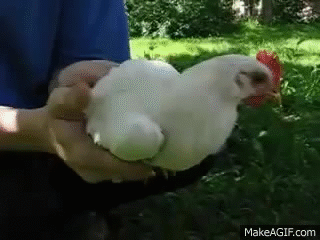
The digital solution is mostly just fancy image cropping. It zooms in a tiny bit on your image and then aligns a continuous crop to give the appearance of a stable image.

The lens and the sensor are still a jiggling mess, but this constant cropping allows you to see the illusion of a stable image in your viewfinder and in the videos you take. And while this is very helpful for tracking subjects and capturing video footage, it will not help you negate motion blur—which is why the other two methods are preferred for still photography.
Bigger cameras can often forego stabilization because the zoom lenses are bigger and heavier and don't shake as much and they let in a lot more light so you can raise your shutter speed to freeze motion. It's still nice to have, and if you have IBIS and optical stabilization combined on a big camera you can almost take pictures in the dark without camera shake, but all of those conveniences can get costly.
The camera you have now is called a "bridge" camera or a "superzoom". These are (relatively) inexpensive cameras that use a smaller smartphone-style sensor but with a more classic camera body surrounding it and a non-changeable lens. Small sensors have one big advantage where if you put a zoom lens in front of them, they can see from Alaska to Russia.
For instance, your camera has an 840mm equivalent lens. That is near telescopic.
For reference, this is what an 800mm lens looks like for a full frame professional camera.

It weighs 10 pounds and costs about $13,000.
Granted the image quality of that lens is in another universe compared to your superzoom, but if you are mostly interested in documenting the birds you are encountering, a superzoom is a neat tool to have. It's like digital binoculars.
So I guess the question is, do you just want to document your bird adventures or do you want to delve into artistic bird photography?
You can upgrade to a nicer superzoom and get some improved clarity and ease-of-use features, which is totally valid. You could even get a "premium" superzoom that can do artistic bird photography in ideal lighting conditions.
Or if you go with a more professional interchangeable lens camera system (ILC), you can achieve some stunning artistic photos like these...



Freezing a bird midflight while catching a fish is just not really feasible with a basic superzoom.
Let's talk about the advantages and disadvantages of a superzoom bridge camera as compared to a more professional ILC setup.
Superzoom Pros
No learning curve. These cameras are designed for novice photographers and have very good automatic functions. You can pretty much pull them out of the box and start taking pictures without knowing the fundamentals of photography.
Incredible zoominess. You can get amazing zoom power for a fraction of the price.
Budget friendly. The top of the line superzoom camera is still only about $1500 as compared to the top of the line mirrorless ILC (for wildlife) which is $6500 *without* a lens. And the lower to mid range superzooms are even more affordable, especially if you consider used options.
Superzoom Cons
Noisy images in low light. These cameras are mostly suited for bright sunny days. The small sensors and cheaper lenses do not capture very much light. In more challenging lighting situations you will tend to get very noisy images due to using a high ISO to compensate.
Inconsistent image quality. Under the best of circumstances, you can get some really beautiful photographs. But when you push the camera to its extremes, the image quality can start to deteriorate. Low light causes noise. The more you zoom in, the softer your images will get. Low megapixels limit your options to crop in on far away subjects—which is often an issue with wildlife.
Deep depth of field. A lot of bird photographers like using shallow depth of field to blur the background so the bird really stands out in the photo. Small sensors can have a very hard time blurring the background unless the subject is quite far away and you are zoomed all the way in. But when you are all the way zoomed in, the image can get soft and lack detail. So you trade image quality for a blurry background.
Lack of professional features and accessories. There are many advanced features that can make bird photography much easier. Some cameras have advanced motion tracking that can allow you to capture birds in flight. The latest generation can even track a tiny bird's eye. There are also accessories that are only made for ILCs. Like motion activated shutter triggers that will take a picture of a bird automatically if you set up a camera near a feeder. There are flashes that work at very long distances. You can get camouflage skins for your lenses so the birds can't see you. Stuff like that.
ILC Pros
Lower image noise. With a bigger sensor and better lenses you can shoot with a very low ISO in good light and get incredibly clean noise-less images.
Better high ISO performance. If you are in low light, you can increase the ISO and still get a very good image. The noise on an ILC is much less distracting and easier to deal with—especially with advanced noise reduction software.
Background blur is easy. Due to the much larger sensor and telephoto lenses, almost every telephoto image will have beautiful blurry backgrounds no matter how small the aperture is.
Sharper, faster lenses. The lenses are much sharper and let in a lot more light. The quality of the image does not decrease as you zoom in. And the sharp optics allow a lot of leeway for cropping. So even if a bird was super far away, you can crop the image after the fact and it will still be quite detailed.
More megapixels. A lot of bird photography needs to be cropped in due to subject distance. Having more megapixels allows for more cropping. (I know I keep talking about cropping, but it really is a huge aspect of most bird photography.)
Advanced autofocus. This is the big game changer, especially on the new mirrorless cameras. The latest Canon and Sony cameras have eye detect autofocus for animals. You can literally lock onto a bird's eye while it is in flight and get perfect focus. It's bonkers.
ILC Cons
Steep learning curve. A lot of people think they'll get a big ILC and immediately get better pictures than their smartphone. They are often disappointed when that isn't the case. You really need to learn the fundamentals of photography to get good photos out of an ILC (free course here). They do have automatic modes, but without learning about aperture, shutter speed, and ISO (the exposure triangle) and how to balance them and when to prioritize what, you might end up with *worse* photos than a smartphone.
Wildlife photography can get very expensive. Big lenses with a lot of zoom are some of the priciest available. There are some budget options, but you will have to sacrifice quite a bit of zoom and light-gathering capabilities. The quality of the photos is usually worth it, but you may have to learn how to get closer to birds to photograph them.
Heavy as heck. Superzooms are very light and portable. A wildlife ILC configuration is very unwieldy. The camera is heavier. The lens is long and heavy. Carrying all of that gear into the wilderness can be quite a hassle.
Some camera suggestions...
Superzoom Options
If I'm being honest, in the sub $300 range, I don't think you'll be able to drastically improve over what you already have. All of the cameras in this range are quite similar and while a few might have some features that are helpful, the image quality is going to be roughly the same.
You are probably going to need to spend at least $400-700 to get a meaningful upgrade from what you have.
The top-of-the-line superzoom would be the Sony RX10 Mark IV at $1100 used. You can get the previous model, the Mark III, for about $900 used. It's a wonderful camera and the image quality and features rival or even surpass some ILC options. If you don't have the time to learn an ILC system but want the best possible quality, this might be an option. But an ILC will still give you better results if you are willing to put in the time.
For more mid-tier superzooms, you might look into the Panasonic Lumix models. They use slightly larger sensors than most superzooms and are known for their lens optical quality along with their stabilization.
The FZ1000 is getting very old, but it is still a powerful camera at a good price. The only downside is the focusing system isn't as advanced as newer cameras. But it will be better than what you have and you can find one used for around $400.
The newer FZ1000 II or the FZ2500 would be great options that have more modern autofocus and a lot more bells and whistles. They are fairly similar and can both be found for around $650 used. They do great video as well.
These are not the only options, but they are ones I know of and models I have heard positive things about. If you want to see what else is out there I would google "bridge superzoom cameras" and then maybe add your price range as well. Read reviews and watch YouTube videos to get a sense of the cameras you are interested in. As long as the camera has decent autofocus, I don't think you need a specific bird feature—so I wouldn't limit yourself in that regard.
ILC Options
When trying to come up with a good bird photography setup for interchangeable lens cameras, there is basically an easy, medium, and hard mode depending on how much you spend.
As I mentioned, the top-of-the-line mirrorless cameras have autofocus tracking that can lock onto a bird's eye while in flight. They have both IBIS and lenses with optical stabilization. They have burst modes that let you take 30 photos per second. They have 50 megapixel sensors that allow you to crop to your heart's content and still have megapixels left over.
It's quite dreamy if you have the money.
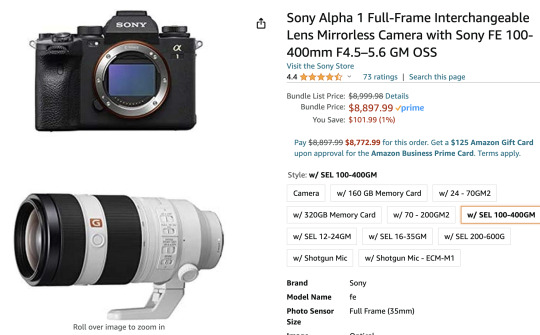
But I'm guessing if you are coming from an Olympus bridge camera that is probably a bit more of an upgrade than you were thinking.
So if easy mode is not viable, let's talk about medium and hard mode.
If you still want the bird detecting autofocus, in body image stabilization, and a pretty zoomy lens, Canon has some newer mirrorless cameras that would take amazing artistic bird shots. It's still spendy, but not $9000 spendy.
The Canon R7 is a great APS-C mirrorless camera with IBIS that can be found used for about $1300. It has 32 megapixels and due to having a slightly smaller sensor, you even get some bonus zoom out of all your lenses at about 1.6x. It's still a much larger sensor than a superzoom, just not quite the size of the Alpha 1.
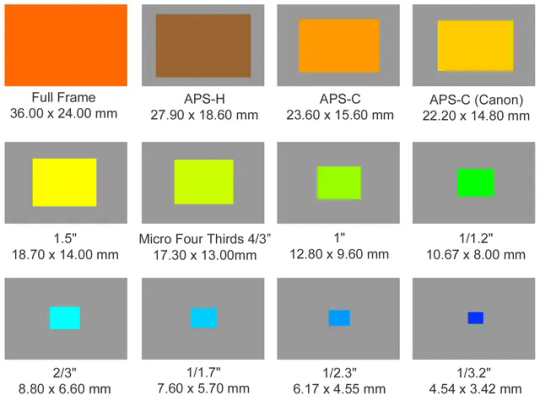
Alpha 1 is Full Frame. R7 is APS-C. And Superzooms don't get any bigger than the 1" sensor.
Pair the R7 with the RF 100-400mm lens ($600 used) with optical stabilization, and you would have a stellar bird photography setup for about $1900. (It would be a 160-640mm equivalent lens on the R7 due to the 1.6x crop factor.)
Which is probably still way more than you want to spend.
So we have the hard mode option.
No bird eye autofocus. No stabilization. You have to learn the fundamentals and practice in order to get good shots. However, wildlife photographers have been getting AMAZING photos with the gear I'm about to suggest. In fact, all of these photos were captured with the hard mode ILC combo.
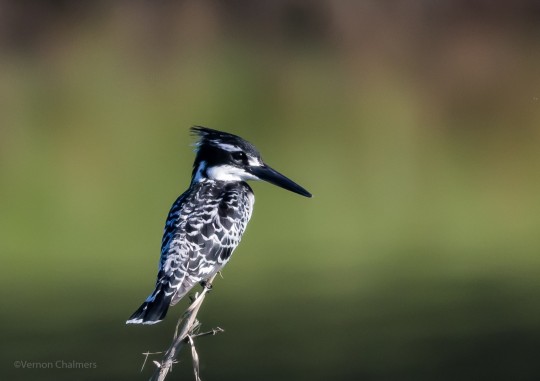

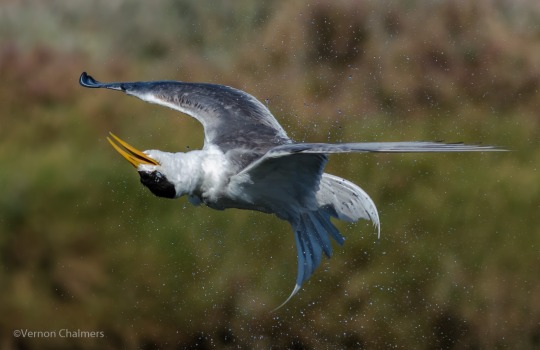
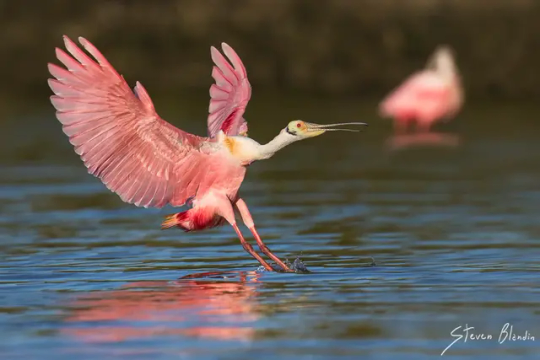
The Canon 7D Mark II has been a beloved camera body for wildlife photography for many years. Many pros still use it to great effect to this day. It doesn't have bird autofocus, but it still has one of the best DSLR autofocus systems that was ever developed. It can even track moving subjects, it just doesn't know it is tracking a bird so it is more prone to error on occasion. It can be found used for $500-600.
The Canon 400mm F/5.6 telephoto lens is one of the most affordable lenses Canon ever made for wildlife. It is an old lens, but it is sharp and takes beautiful images. No stabilization, but it is big and heavy so that isn't a huge deal. You can also carry a monopod rest it on. And on the 7D II, it is the equivalent of a 640mm lens. It costs around $650 used, which is very inexpensive compared to other telephoto lenses.
So you are looking at around $1200 for the combo. But the photos you can achieve with these two items will blow pretty much any superzoom out of the water.
To sum up...
ILC photography is always going to have a steep learning curve and expensive barrier for entry, but you can achieve some truly stunning results.
Superzooms are getting better and some of the newer ones can still take excellent pictures of birds under the right circumstances. They are lightweight and hassle free and allow you to get incredible zooms for a low cost.
If you mostly take photos of stationary birds outside on bright sunny days, you will be fairly happy with a superzoom.
If you want to take photos during darker times like sunrise or sunset or in a dense forest... or if you want to take photos of birds mid-flight, you will probably have to get an ILC.
I hope that was helpful. I know I overdo these answers, but I try to help as many people as I can by giving a broad overview of the topic and the myriad ways to go about things.
46 notes
·
View notes
Text
Chapter 30- Part 5
Uh…I’m gonna…move on from that rant of mine and get back to explaining what makes Suna so neat.
The third thing is her moveset:
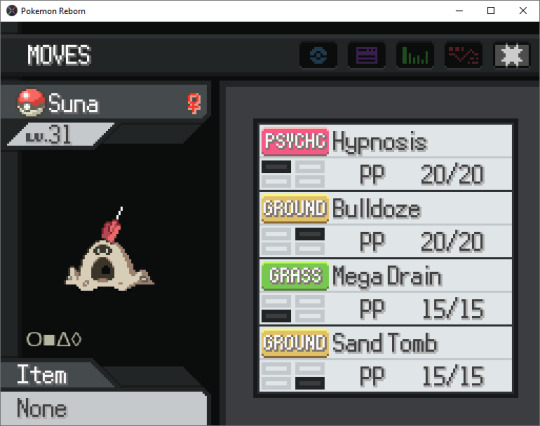
Specifically, the fact that she has Sand Tomb, a move that gets powered up on Ashen Beach. Combine that with Suna’s pretty good Sp. Attack, and she can probably do real damage with that (and Shadow Ball once she learns it).
Of course, that's just one team member. The rest…well, lemme think about this.
I'm expecting Kiki to have a Medicham and/or a Lucario, those seem like staples of Fighting teams, and they can learn moves and have Abilities that synergize nicely with Ashen Beach. I don't think she's gonna have another Fighting/Psychic-type in the form of Gallade, since Victoria already had one and there are plenty of other Fighting-types to choose from. Like…Hawlucha! To use special Flying moves to mess with my own team's Accuracy! And maybe Heracross to deal with Psychic-types?
She doesn't seem like the type to use Dark-types, and using Poison-types seems…darkly ironic given her condition so I doubt we're gonna see any of those either.
But Ame also brought up the move Meditate specifically. Other Fighting-type Pokémon who can learn that move in some fashion include:
Hitmonlee
Mienfoo/Mienshao
Mankey/Primeape
Machop/Machoke/Machamp
Ame also said something about her Pokémon still being able to hit despite Accuracy drops, so that makes me think of Mind Reader. Other Fighting-type Pokémon who can learn that move somehow include:
Poliwrath
Tyrogue/Hitmonlee/Hitmonchan/Hitmontop
Breloom
So…yeah, a good amount of options, still. So now, let me see what I can do in terms of teambuilding. I already mentioned Suna, and Riptide is a given, but outside of that…I mean, I already know not to rely on Flying-types, so that's one option out. That just leaves Psychic- and Fairy-types. Kirin seems good with Zen Headbutt, and Asano can learn that same move so I can probably add him too. I could also add Glare to the team, Intimidate goes hard and she can resist Fighting moves as a Poison-type. And…heck, let's bring Gust back in, priority Cotton Guard and Charm also go hard.
So in the end, the team's looking like this:
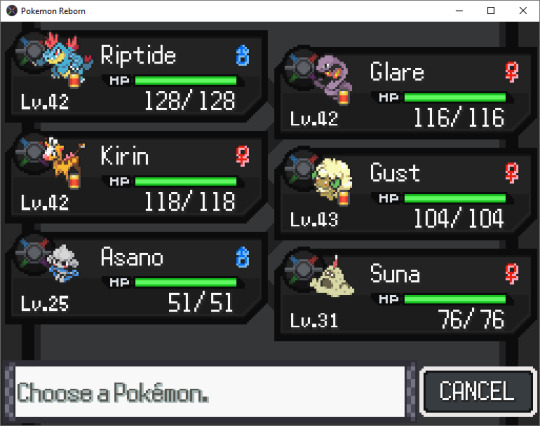
I'm gonna get everyone up to Lv. 44. I was considering Lv. 43 at first, but I'm also highly paranoid and so I'm going an extra level to be safe. Training time!
(Yet another training montage la
So I made a mistake.
I trained, I even got Asano to evolve-



But while I was training, I thought to myself, “Huh, shouldn't Asano have gotten Zen Headbutt by now?” And Bulbapedia seemed to agree with me…until I realized I was looking at the wrong thing. I was looking at Meditite/Medicham's Gen IX moveset, not their Gen VII set. And in Generation VII…the only way Meditite or Medicham can learn Zen Headbutt is through the Move Reminder. In fact, they can't learn any damaging Psychic-type moves (besides Confusion) just by leveling up.
So…I can't use Asano for this fight. I need a different Pokémon, someone who can actually take advantage of Ashen Beach. Another Psychic-type probably, hmmm…
Looking at my Boxes, I can see…OH! Shimmer the Munna! She's got-

She's got Lucky Chant! That protects against critical hits! That'll be really helpful in case Kiki has more Telluric Seeds! And…she can also learn Psychic, which gets boosted on Ashen Beach! And I have a good amount of Moon Stones too, so I can easily evolve her!
Okay, so-

Yeah! This is gonna be the final team! Now we can really do some training!
(One ACTUAL training session later…)


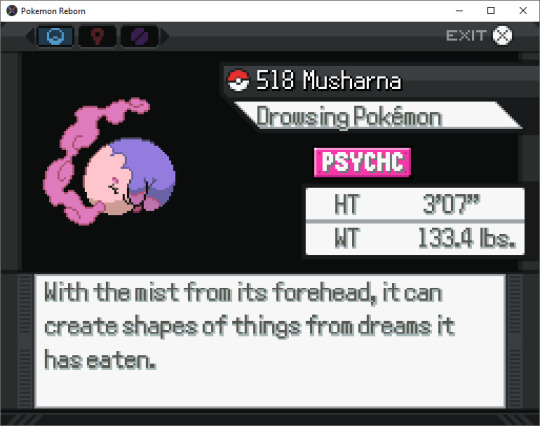



So, with everyone evolved, this is what things are looking like now:

Shimmer is holding the Twisted Spoon to further boost her damage output with Psychic, while Suna is holding the Zoom Lens to make sure Sand Tomb will actually land. I didn't think anyone would really benefit from the Telluric Seed this time, so I'm holding onto it for now.

So now, here we are again. The other NPCs don't really say anything interesting, so let's talk to Victoria instead.


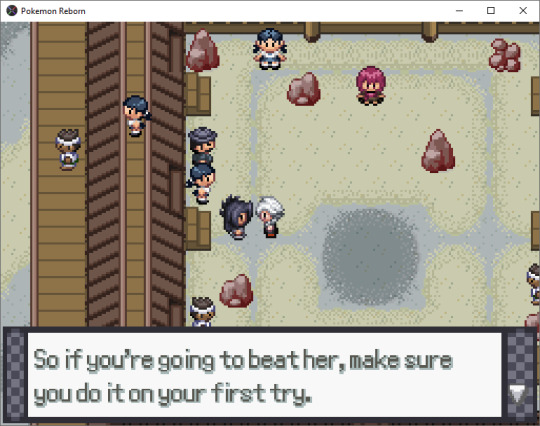
Thanks Victoria, no pressure-

Alright, let's see how this goes. I'm going to lead with Shimmer to start strong, and go from there.




Oh, Victoria's acting as the referee? That's neat, proud of her for moving up in the world.





What, can't even open your eyes to look at who you're fighting, Kiki? More disrespect! Can't have anything in the Reborn region …
Also- I'm sorry, but what the heck is this music? It's like…I can't even describe it, but it's not at all what I was expecting. What kinda whimsical wizard boss theme is this??
(Future edit: So I tried to look for what this track was because it was killing me, but I couldn't find anything. I'm sure it's a remix of some kind, by GlitchxCity or otherwise, but I just can't parse it. This is going to haunt me until the end of my days, if someone knows what this track is, let me know-)
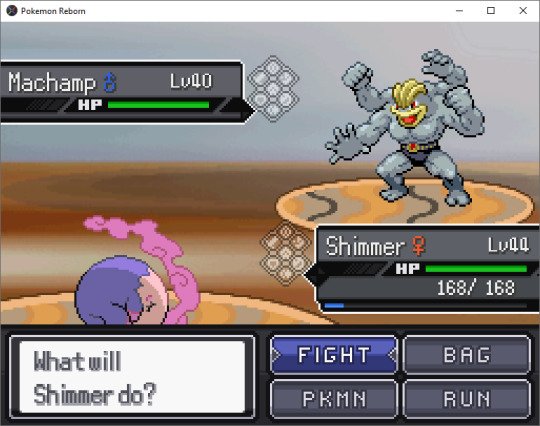
Lv. 40…am I overleveled? Maybe. But still…let's just make sure we can kill and open with Calm Mind.
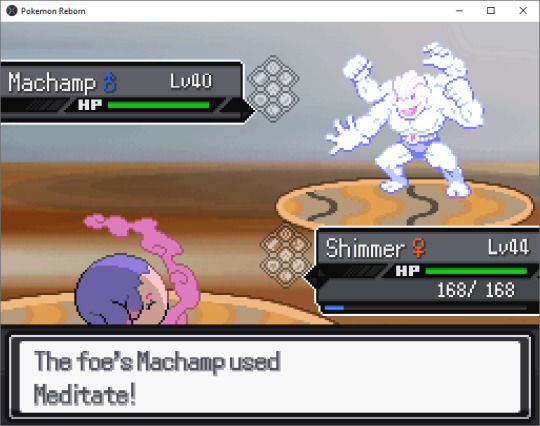
Oh, that might not be good. Unless…I mean, as long as it doesn't use a super effective attack, maybe it'll still be fine.
Previous
Next
4 notes
·
View notes
Text

SHOP: Off-White x NIKE Zoom Fly SP 'Black'
#hypebeast#hype#sneakerheads#hypebeastdrop#hypedrop#hyperelease#hypebeastsneaker#sneakerhead#grailed#stockx#kickscrew#stadiumgoods#goat#klekt#flightclub#farfetch#ebay#mercari#sneakercommunity#nikecommunity#offwhitecommunity#nikeswoosh#swoosh#nikecheck#nikezoomfly#nike#virgilabloh#offwhite#offwhitexnike#nikexoffwhite
6 notes
·
View notes
Link
Check out this listing I just added to my Poshmark closet: New Nike Women's 9.5 Zoom Fly SP Blue Athletic Running.
0 notes
Link
Check out this listing I just added to my Poshmark closet: Men’s Nike Zoom Fly SP/AJ9282-106 Size 9.5.
0 notes
Text

The video is in some kind of conference hall or theater. It's absolutely massive. The grain of the tape makes it hard to see the finer details, but you might see hundreds in the crowd. There's a stage in the center of the screen. Bright stage lights turn on and swivel to illuminate a figure in a suit walking into the center. Whoever is holding the camcorder zooms in to focus. You would recognize him anywhere, even with the grainy quality. It's the figurehead of Apollo, Alerich Kane. He stands at the center, adjusting a microphone on a podium. The crowd is applauding his presence. "Hello," he says, "and thank you for joining me today. I recognize fully that as world leaders from all different time zones that the journey must have been difficult, but I promise you it will be well worth it."
World leaders? Who exactly are the people in this crowd? Government figureheads? CEOs? Military generals? "What I present to you today is a project that will revolutionize warfare. I am confident that what we have to offer is more powerful, destructive, efficient and war-ending than the nuclear bomb. That may sound hard to believe, but you know Apollo. We don't just fly close, we actively reach for the sun." The camera shifts unexpectedly, focusing on a group shuffling onto the stage. There's 2 people wearing heavy-looking black armor. It looks like the exosuits Apollo developed for war a decade ago. They're walking over a pale-looking man wearing black pants and a loose white dress shirt that's barely buttoned. He looks haggard and you think you can make out handcuffs. Or at the least, that would explain why his hands are trapped behind his back.
Kane pulls a small case from under the podium and opens the lid. The camera zooms, struggling to focus. It looks like some kind of syringe. "We call this the Drone project. Imagine a tank." The camera zooms back out a bit, showing a projector screen that has unrolled, presenting a visual aid of a tank. "Tanks are widely perceived as unstoppable war machines. They're heavily armored, can fire heavy artillery, and their tank treads let them cross almost any terrain. But the fault line in an arms race is that if you keep making your war machines bigger, the more they lose mobility." The slideshow starts flashing diagrams, text, arrows and circles all over the photo. "Tanks are of course incredibly tough. But they can get stuck in swamps and snow. If you hide in front or behind, or on the turret it can't shoot you. If you hit it with its own artillery, it explodes. And it can only aim so quickly. Compare this to..." the slide swaps to a soldier.
"The average soldier. Very mobile, very dexterous, very fast. But even with our advanced prosthetics, implants, and exoskeletal armor and weaponry, a mere human can't do as much damage as a tank. The cost of mobility is vulnerability. The cost of heavy armor and weapons is that mobility. This dichotomy was impossible to resolve, until now." He walks over with the syringe and jabs it into the man's shoulder, who you are all but certain now is a prisoner of some kind. He writhes in pain for a few seconds before going limp, and finally stands back up, mostly regaining his composure. "We'll go ahead and let the solution spread throughout the body for a moment. In the meantime, let's talk a little bit more about what this project actually is." The slide swaps again, now displaying an Apollo II. "This device needs no introduction. The Apollo II has dominated the computer market and become the ubiquitous image of what a computer means. Many have wondered how exactly we managed to demolish the barriers in computer technology, far outclassing what other computers on the market can do for the same price, if not cheaper. What I'm about to show you may seem unbelievable, but it's true."
The slide changes again. You can't believe your eyes. It's a cross-section of the all-in-one computer, but the interior....it's not boards and computer parts. It's meat and bone. Blood spills out of the chassis. You can see broken bones reinforcing the chassis and what looks like the folds of brain. "This was the earliest successful prototype of the Apollo II computer. The interiors of the modern Apollo II, the one that made it to market, does not look like this. And there's a reason why. Flesh and metal are not that different, my friends. We both feed, we both create waste, we both have electricity pulsing through us, giving us life. If you have the right knowledge, the right technology, you can make one behave like the other. You can allow plastic and metal to grow, evolve, self-repair. Do you know why we have such a generous warranty? Because our computers self-maintain in 99.8% of cases."
What the fuck is he talking about? And where is this going? You're horrified by what you're hearing, but even moreso by the implications of his statement. Metal behaving like flesh, and flesh behaving like metal. You gulp. What did he inject into that man? Fortunately, or unfortunately, the camera swivels so you can find out. The two guards have been assembling a stand with a hefty metal rod while Kane has been speaking. They stand the man up straight, loop his handcuff chains around a small hook on the pole, and stand back. You can't help but notice they're holding large, strange-looking firearms as if they're preparing for something. Your chest seizes. The anticipation is palpable even in the crowd. "Now, if we can make metal behave like flesh, the naturally the conclusion is that we can, and should, do the opposite. A Drone is that concept incarnate. Now please, make sure to equip your earplugs now. Be warned that if you hear the trigger tone raw, it can cause intense nausea, sickness and even cause you to pass out." The camera shuffles around and points down. Seems like the person filming is heeding the warning. Before you can consider if you should too, a sharp tone screeches from the TV. You cover your ears. It's painful, but mostly because it's loud. Maybe being filmed on tape, and then played back through the small speakers of your TV are muffling it? When the camera comes back up, you can see the prisoner on the stage spasming violently. He's foaming at the mouth. Black veins are bulging under his skin, and that's not the only thing. His skin is rippling like something is struggling under it. His violent spasming gets more and more intense, until his flesh explodes in gore, ripping itself to shreds. Sharp metal shards explode from the stumps. They grow into their own limbs made of black metal, messy arrangements of tubes and ending in a mess of parallel gun barrels in varying sizes and shapes. What looks like rebar and loose, dangling wires push their way out of the stomach. They're wet and slick with blood and bodily fluids. And the worst part is the face. The entire skull reshapes itself and metal plates push through around the eyes. Eventually, the entire mass of clumped together metal parts form a visor that completely covers the eyes. Except visors normally need a head strap. This one grows directly out of the face. You barely stop yourself from vomiting.
The victim's face is completely stoic. He stands completely still without so much as a sign of fear or pain. "A bit messy, but extremely effective. What I injected into our subject is a serum that alters the genetic code, primes it so that when the trigger is played, flesh becomes metal. But that's not even the best part. The metal still behaves a bit like flesh. It will self-repair, adapt, grow to suit its environment. With this cohesion, we finally find our middle ground. A soldier could be injected, intentionally allowed to enter enemy prison camps, and then a sound weapon can be deployed that not only triggers the transformation but also nauseates those around it." As he speaks, the slideshow starts displaying video of a drone operating in a testing ground. The results are devastating. As the drone in the video callously rips apart enemies into showers of blood and gore, levels buildings, and even withstands tank artillery only to fire back with just as much power, Kane shows absolutely no disgust or fear at all. He simply keeps droning on and on about the incredible technology at work, the implications for warfare, why the audience should invest. It's sickening. Apollo has a lot of power, and you know as well as anyone it didn't get that nobly. But this....this is beyond anything you could possibly imagine. The idea that early versions of the iconic Apollo computers had blood and guts in them? And that they're aiming to turn victims into mindless war machines? You know well that this can't stand. And these experiments might well be what could finally end their corporatocary.
Your contemplation comes to an abrupt end. There's loud booms and screaming. You once again focus on the screen and see the Drone doing exactly what it was designed for, just not for the targets Apollo intended. It moves as if it still holds malice, firing upon the crowd. The camera shakes wildly as the cameraman bolts, as do much of the audience. Through the aggressive shudders you can barely make out the guards firing upon the drone. Looks like their weapons weren't typical firearms, but EMP weapons of some kind. The video abruptly cuts off. You sit in silence for a while. The room is illuminated solely by the blue screen of your TV. Things are deathly silent. You quietly eject the tape and start packing it up. Part of you still wants to investigate the huge pack of documents, to see the details. But a much more significant part of you is terrified to learn more. You need to pass this off to the appropriate news outlets as quick as possible. And as subtly as possible.
...
There's a knock at the door.

You're an investigative journalist. Your job is to expose ugly acts and bring awful people to justice. Or at least, that's what you hope to accomplish. You've done a lot of good, but been forced to sit in the sidelines too. And you haven't had a hit in a while. But that's changed out of the blue, and all because of a strange package.
It's a small manilla envelope, packaged with a thick pile of messy, hand-written notes, some photos, and a camcorder cassette. There's a note at the front, clearly meant to be read first, folded over and carefully sealed with tape. It says "READ ME".
"If you're reading this letter, I'm almost certainly dead. In the astronomically rare case that I did in fact survive, do not make any effort to search for me. Apollo might already be keeping an eye on you just because I sent this package, and I have no interest in them finding me.
I have made the choice to keep my identity anonymous for the above reasons, but the materials I've collected should do more than enough work to prove this isn't some kind of elaborate prank. The attached materials are all for an abominable project Apollo has undertaken, and one I have quietly watched over and been terrified to intervene. But seeing it in action has convinced me something needs to be done, and this is the best I can afford."
The stack of notes is so dense and scrawled in such a panicked, messy way that it's almost intimidating. You'll start reading those eventually, but you turn your attention to the tape first. If you want to prove this isn't some elaborate prank, the notes wouldn't necessarily prove it. Anyone could write anything. You need to see the video first. After all, if it isn't fake, then it better be damn conclusive.
You walk over to your TV. The only kind that would reasonably fit in your tight apartment is a smaller model with a built-in VCR. Better than nothing. You turn it on and it steadily whines to life. Black gives way to bright blue and a message in white informing you you're in VCR mode. You insert the tape and the mechanism happily takes it in. Honestly, you were half-expecting it to just spit it out. You shrug, hit play, and sit in your sofa. After a moment of black, shaky handheld video snaps into focus.
10 notes
·
View notes
Text

#blacklionkicks#nike#sneakers#nike air#nikeshoes#nike lab#nikerunning#nike run club#nikeplus#zoom fly#nike zoom fly#zoom fly sp#zoomchallenge#nikes for sale#for sale
59 notes
·
View notes
Photo
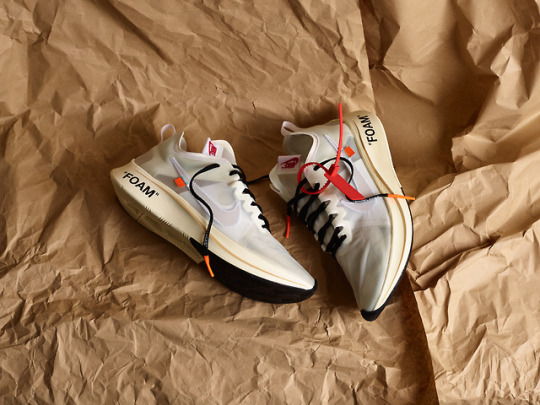
Product Studies - Nike X Off-White Zoom Fly SP
#NIKE#OFF-WHITE#VIRGIL ABLOH#NIKE X OFF WHITE#ZOOM FLY#ZOOM FLY SP#SNEAKERS#PHOTOGRAPHY#PRODUCT STUD
4 notes
·
View notes
Photo
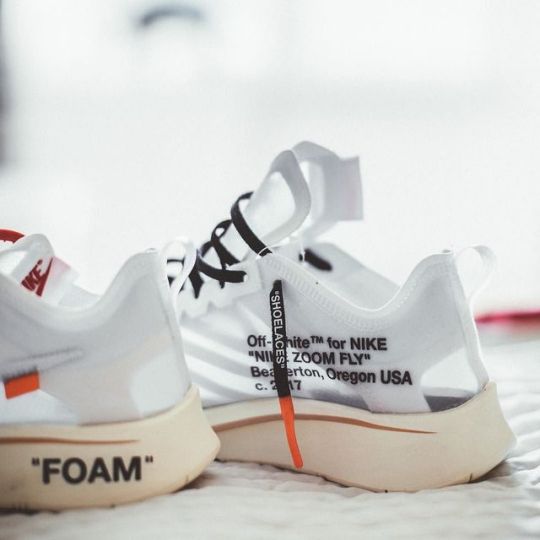
via 50production
#the ten#Virgil Abloh#off white#nike#zoomfly#zoom fly sp#swoosh#sportswear#kicksdaily#kicksonfire#nicekicks#sneakerhead#shoes#sneaker#sneakers#kicks#sole
161 notes
·
View notes
Photo







First Nike Lab sneaker collected!
1 note
·
View note
Photo
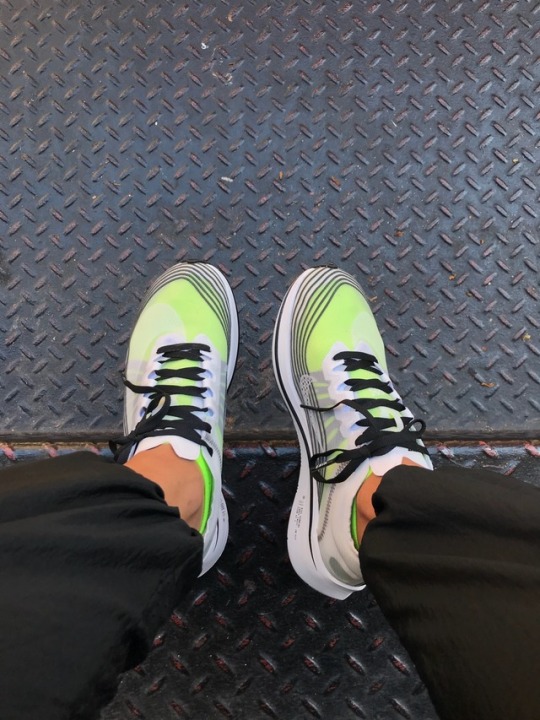
Zoom fly SP
22 notes
·
View notes
Photo
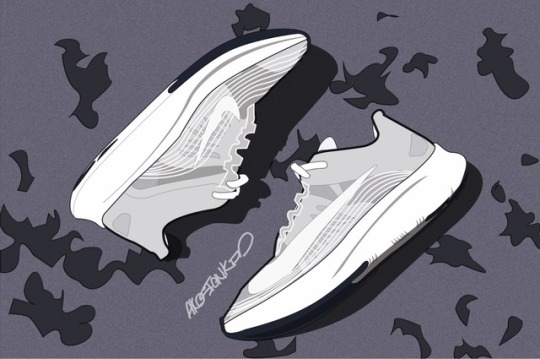
TRIPLE WHITE BY AKOSTONKID
#akostonkid#art#zoomfly#fashion#style#design#illustrator#illustration#footwear#running#zoom fly sp#nike#nike running
7 notes
·
View notes
Photo

Off-White x Nike - "The Ten"
9 notes
·
View notes
